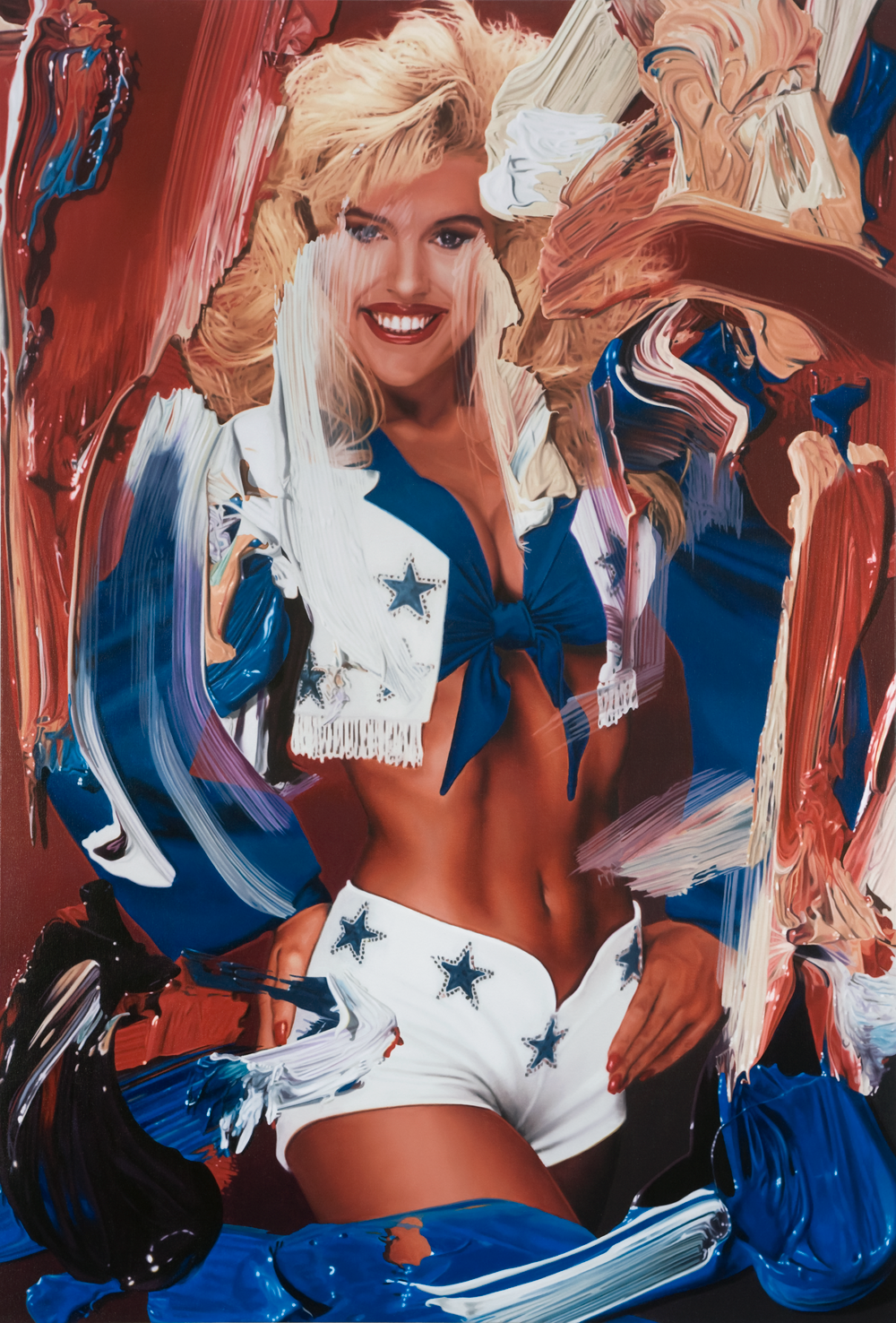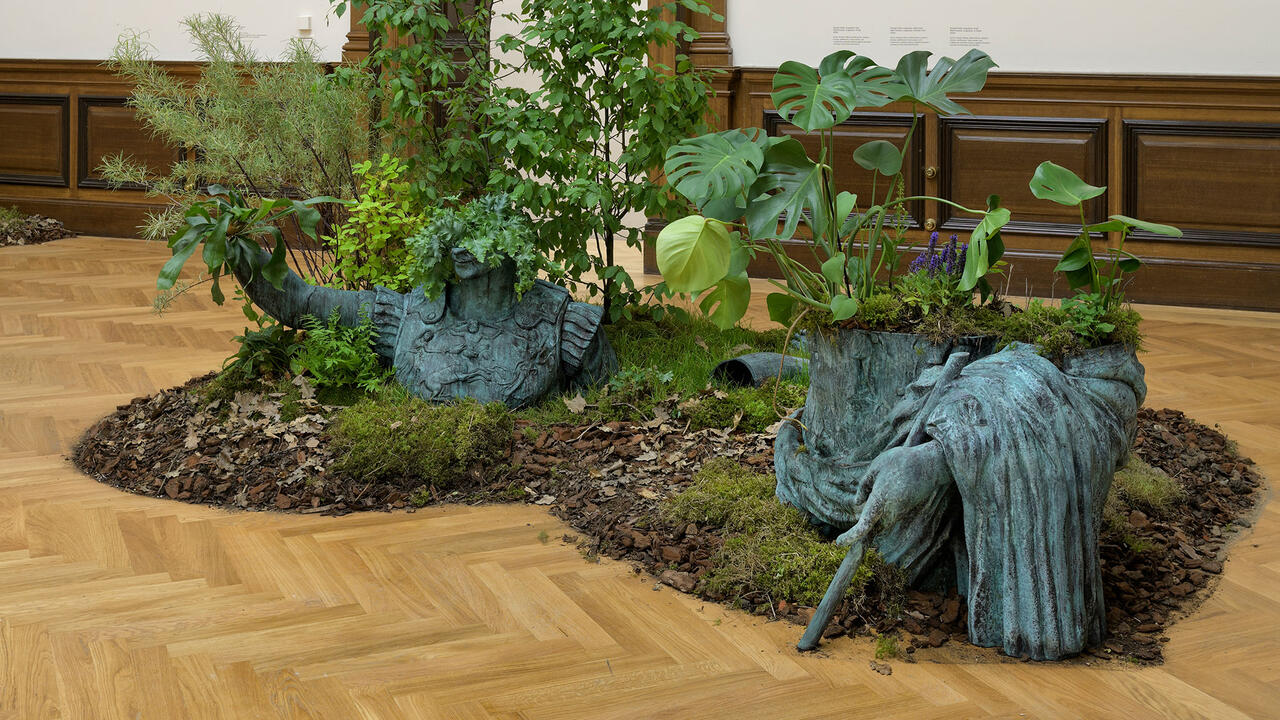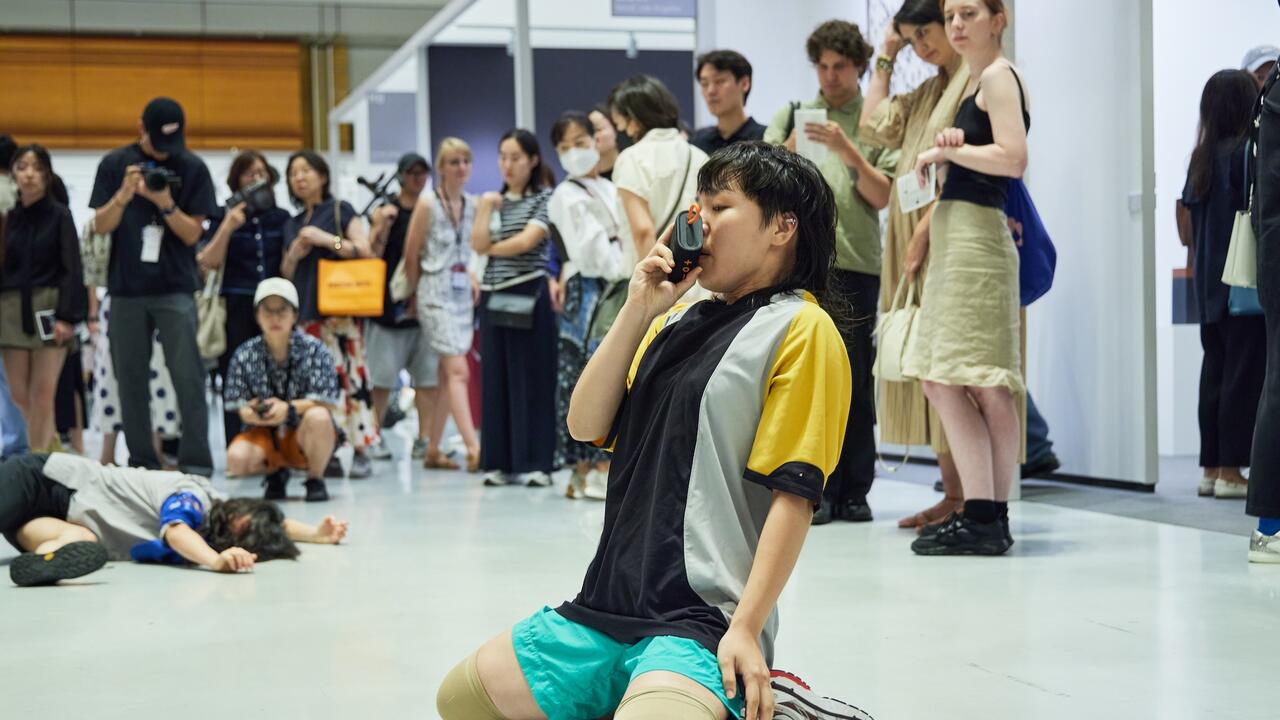Richard Patterson
Goss Michael Foundation, Dallas, USA
Goss Michael Foundation, Dallas, USA

Dallas, the city that British artist Richard Patterson now calls home, is built on many of the principles that underpin the artist’s work: directness, libidinal enthusiasm and a kind of cavalier indifference to most of what the rest of the world thinks of it. These qualities, however, in life as in Patterson’s art, exist only on the surface. Underneath, he is still a deeply English artist: melancholy, anxious, acerbic, inscrutable and with a taste for irony that borders on connoisseurship.
His exhibition at the Goss Michael Foundation was not so much a retrospective as a primer for his modus operandi. It included a selection of early paintings and collages from 1997–8 featuring ‘girl power’ pop phenomenon, the Spice Girls, an array of preparatory studies and models, two major paintings that formed the intellectual and emotional axis of the exhibition, and a recent sculpture that was something of a departure from his hitherto neatly demarcated techniques.
A row of assemblages at the entrance to the show revealed a favourite process: he takes a found image, and places over it a sheet of acetate on which he smears and daubs gestural blobs of oil paint. This sandwich is then photographed, enlarged and painstakingly copied onto canvas in airlessly smooth transmissions of colour. In paintings such as Exile on Jackson Street (2003), this process leads to an almost manically exaggerated super-saturated sheen; in earlier works such as Posh, Thompson and Scary (1997) it effects a joyless blankness that is little short of morbid.
Exile on Jackson Street could only have been conceived in Dallas. Commissioned by a local collector whose wife, Amy, is a famous ex-Dallas Cowboys cheerleader, it is an enlargement of a collector’s card featuring the primped and coiffed Amy grinning at the viewer through a mess of Patterson’s paint smears and daubs. The source image is an icon of puerile repression – a de-eroticized cipher of sexiness, and as disassociated from the urges that engendered it as is Patterson’s photorealism from the subjects he portrays. The clammy, painterly pawing that surrounds it seems to be an effort to close up this gap – the colours emulate the tones of the figure’s skin, hair and outfit – or, through their impartial handling, to force us to apprehend both layers, both impulses and renderings, simultaneously.
Something similar is attempted in the large construction that fills the neighbouring room. Black Narcissus/Ellwood, L-Word: Culture Station (Zipper) 1B (2007) is a wooden display structure, a three dimensional incarnation of one of Patterson’s series of ‘Culture Station’ paintings that was lost in the 2004 fire at Momart art storage depot in London. In these paintings, architecture functions as a virtual dreamscape, in which lustful non-sequiturs – usually oil paint, vehicles and softcore porn – are suspended. In the sculpture, comparable imagery is printed onto aluminium sheets, suggestive wipes of colour fill crevices, and a real vintage motorbike threatens to leak oil onto its blonde-wood shelf. Reality however, or rather the absence of Patterson’s levelling translation of these ideas into paint, is somehow neither as visceral nor as alluring as his images.
If Exile on Jackson Street is an emblem of bloodless success, its south-pole in this exhibition, The Kennington Years (2002), is a dreamy reflection on hopelessness. The huge painting reproduces a still from John Schlesinger’s film Midnight Cowboy (1969), in which Jon Voight’s Joe tenderly leans over the feverish Ratso, played by Dustin Hoffman. As with the former painting, the rescaled abstract marks that play around the figures borrow from their tonal range. However, perhaps because of the emotive subject, or perhaps because I am told that the artist and his brother used to identify with the film’s protagonists when they lived in a squalid south London flat, the marks seem more consoling, less aggressive than the red, white and blue of the cheerleader painting. I suspect that despite his ironic quotations of Abstract Expressionism or his use of nauseating pop-cultural references, Patterson really wants to make grandiose, heart-rending narrative paintings. And sometimes, despite himself, he achieves something close.

























